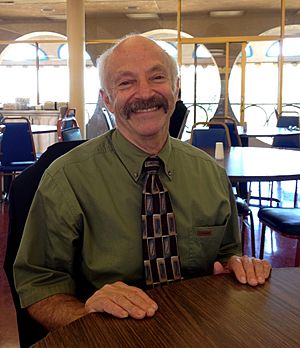David Lee Hoffman facts for kids
David Lee Hoffman is an American who imports tea. He is also the founder and director of The Last Resort, which is a special place for ecological research. He also has a very large collection of teas called The Phoenix Collection.
Contents
Bringing Tea to the World
David Lee Hoffman is well-known for bringing Chinese teas, especially puer teas, to Western countries. He started importing teas from Nepal in the early 1970s. He traveled to faraway parts of China to find unique and rare teas.
A documentary film called All in This Tea was made about him in 2007. Filmmakers Les Blank and Gina Leibrecht created this movie. In 2004, David sold his tea company, Silk Road Tea. Since then, he has focused on The Last Resort and The Phoenix Collection.
Several Tibetan monks helped build The Last Resort. This center in Lagunitas, California, has an Eastern-inspired design. It focuses on living in a way that helps the environment.
The Last Resort: A Sustainable Home
David Lee Hoffman lives and works at a special place he calls "The Last Resort." It is located in Lagunitas, California. The main goal of The Last Resort is to find better ways to manage waste. It also aims to improve how we reuse water and grow our own food.
Worm Palace and Super Soil
David has done a lot of research into vermiculture. This is a fancy word for using worms to compost waste. He created something called "the worm palace." This system turns all household waste into high-quality fertilizer. It is part of his search for "super soil." In 1994, David first shared the benefits of vermiculture. He spoke at a big meeting in Columbus, Ohio.
Eco-Friendly Systems
The Last Resort also has other eco-friendly systems. David installed a greywater system. This system reuses water from sinks and showers for things like watering plants. He also uses a special composting toilet. This simple design was approved by the state. Solar power systems are also used at The Last Resort.
Architecture and Building Methods
David also sees The Last Resort as a "living history of architectural research." For over 40 years, he has overseen the building of more than 25 unique structures there. He uses low-cost and recycled materials. He also uses building techniques he learned during his travels around the world.


